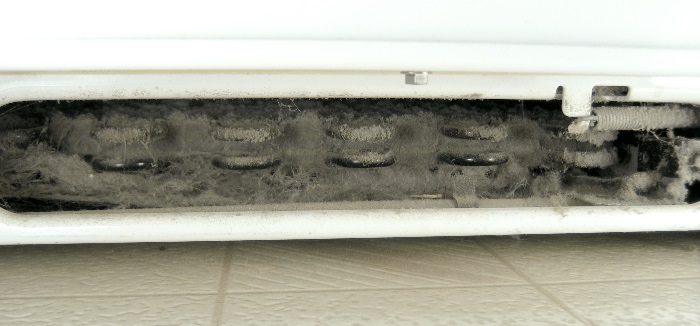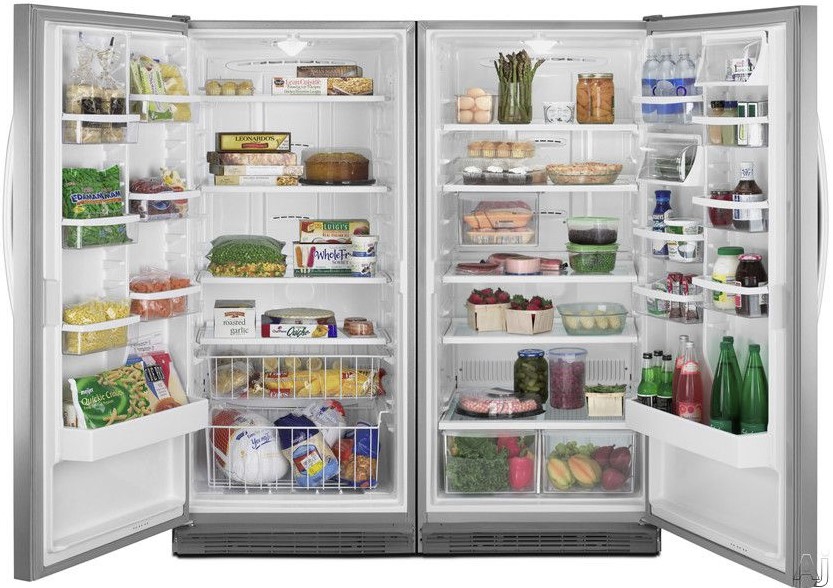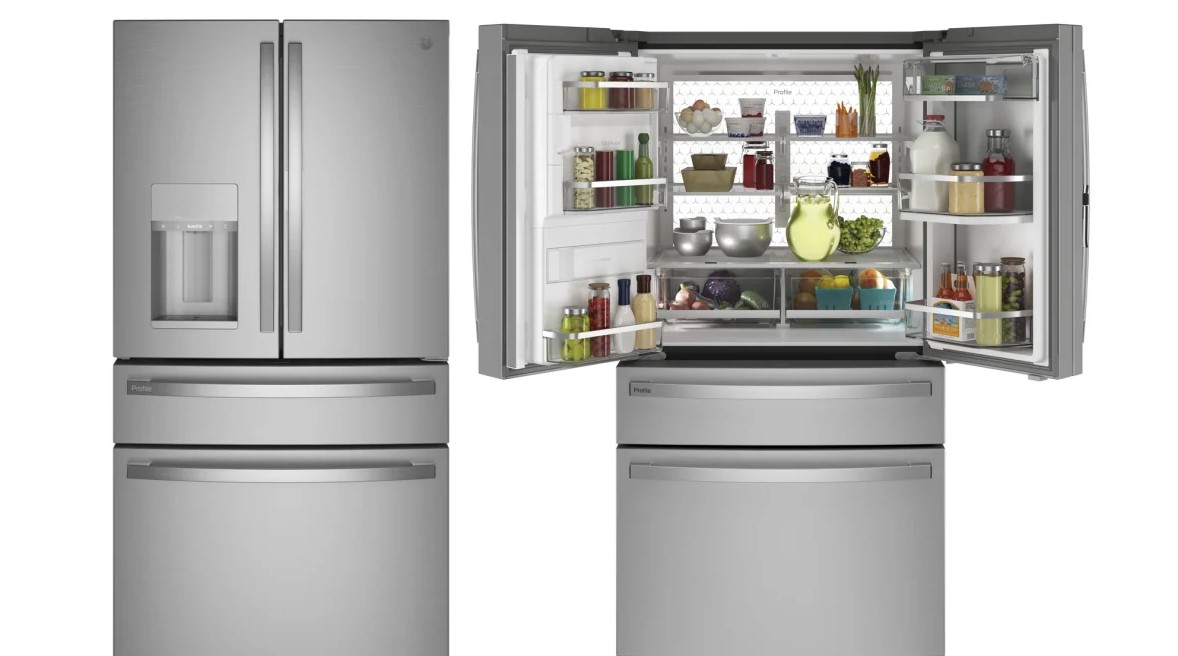Out of the many GE refrigerator issues that you could encounter, running constantly is one of the most challenging.
First, it’s caused by a wide range of factors, so it could take a while to pinpoint the actual cause. You then have arising issues like reduced performance and lifespan to worry about. Not to mention the skyrocketing electricity bill.
On average a refrigerator runs 35% – 85% of the day. Anything beyond that means there’s a problem. Usually, it’s 6-8 hours of the cooling cycle, then it stops running and the defrost cycle begins.
That said, we are here to help you fix this problem before it gets out of hand. We’ve compiled a comprehensive troubleshooting guide that you can use when your GE refrigerator runs all the time. Check it out below.
Reasons your GE refrigerator keeps running and their solutions
Here’s a troubleshooting guide for your GE refrigerator:
1. High-temperature setting
When your GE refrigerator fan is running constantly, check the temperature setting. Chances are that it’s set too high. So, the refrigerator must run constantly to cool the internal temperature. The recommended temperature setting is between 34-420F for the refrigerator and -5-80F for the freezer.
READ: What causes a Samsung fridge to leak water on the floor?
Also, when you keep opening the refrigerator, warm air gets in and forces the refrigerator to work overtime to cool to the appropriate temperature. The solution is to avoid opening the refrigerator frequently. You may have to restrict access. Especially for children.
During the warm season, the high temperatures could also cause your GE refrigerator to run non-stop. This is because it works harder to preserve the ideal internal temperature. Consider adding a drape over the refrigerator or turning up the AC
2. Dirty condenser coils

After using your GE refrigerator for a couple of years, you can be sure dirt and dust will build up. Now, while most people do a good job of cleaning the front body, they almost always forget the condenser coils.
As a result, the steady build-up of debris prevents the condenser coils from dissipating heat effectively. To cover up and ensure the heat is removed, your refrigerator runs continuously.
The solution is to keep the condenser coils dirt-free by cleaning at least twice a year. Make sure you turn off a GE refrigerator before you start cleaning. Unplug it from the power source or cut off the power at the circuit breaker/fuse box.
Read Also: How to fix a frigidaire ice maker that doesn’t work
3. Faulty defrost heater
The work of the defrost heater is to thaw the frost and ice that accumulates on the evaporator coils. This happens during the defrost cycle.
So, a malfunction means the frost will continue accumulating on the evaporator coils unabated, affecting their performance. This forces the refrigerator to run non-stop to remove the heat.
To determine the status of the defrost heater, use a multi-meter to test for continuity. If it doesn’t have continuity, replace it immediately.
4. Defective defrost thermostat
If the defrost heater is okay, you need to check the defrost thermostat. Its job is to measure the temperature of the coils. When the temperatures are too cold it alerts the defrost heater to heat the coils.
A defective defrost thermostat means that it won’t sense the temperature of the coils and signal the defrost heater to turn on. Therefore, the frost will continue to build up on the coils, causing a shortage of air circulation that’s important for cooling.
Just like the defrost heater, you’ll use a multi-meter to test for the thermostat’s continuity. If it reaches the lowest temperature of its operating range, then it has continuity. If not, you should replace it.
5. Faulty defrost timer
The other reason your GE refrigerator defrost cycle is too long could be a defective defrost timer. This part is responsible for starting the defrost cycle after the compressor runs a total of 8-10 hours. It shuts down the compressor for 20-30 minutes and turns on the heater to allow defrosting.
When the defrost timer is faulty the cycles won’t run accordingly. The cooling cycle will run endlessly—until you fix the timer.
For an electrical timer, check its continuity using a multi-meter. If it doesn’t have continuity, consider getting a new timer.
For a mechanical timer, use a screwdriver to turn it around manually. Listen for a click sound as it signals that the heater switch is activated. If it fails to activate the switch, it means the timer is faulty and should be replaced.
6. GE refrigerator is too full or empty

When you fill your GE refrigerator with a lot of food, there won’t be enough room for cool air to circulate. Also, the items could block air vents that deliver cool air. As a result, the refrigerator must keep running to maintain the required temperature.
On the other hand, an empty refrigerator has a lot of free space that must be cooled. This causes the refrigerator to keep running for a long time to maintain the temperature inside.
The solution, in this case, is to simply keep your refrigerator ¾ full.
7. Dirty or damaged door gaskets
If your GE refrigerator is still running non-stop you need to check the door gaskets. Watch out for any wear and tear or dirt.
These two could easily loosen the airtight grip of the gasket that’s meant to keep warm air out and cool air inside the refrigerator. The air leak causes the refrigerator to run constantly as it struggles to keep the temperature inside cool.
To clean the gasket, make a mixture of warm water and baking soda, dip a clean cloth inside and use it to wipe away the dirt.
If the gasket is loose or damaged, get it replaced. Follow the guide below:
- Unpack the new gasket and dip it in a tub filled with hot water. This helps to stretch it out.
- Remove the old gasket using a flat head screwdriver.
- Once one side is free, use your hand to pull the rest off.
- Clean the surface of the refrigerator door.
- Remove the new gasket from the water and let it air dry.
- When it’s ready, start installing.
- First, install the new gasket on the top corners of the refrigerator door.
- Make sure you push firmly to secure the gasket’s connection to the door.
- Move down and secure the bottom, then finish with the sides.
- Rub down petroleum jelly on the gasket and close the door.
- Leave the door for at least 2-3 hours to develop an airtight seal.
- After a few days, wipe off remnants of the jelly from the gasket.
- Pay attention to the duration and frequency of your refrigerator operation. A reduction in the run time means the problem is solved.
NOTE: Always make sure you turn off a GE refrigerator during any installations.
8. Faulty condenser fan motor
The condenser fan motor works by blowing air over the condenser coils to cool them. If it fails to function, there will be no cold air so the compressor must work harder and longer to cool the refrigerator.
To check for any defects, follow this guide:
- Unplug the refrigerator from the power source.
- Pull it from the wall and remove the back access panel at the bottom.
- You’ll find the condenser fan motor close to the compressor.
- Try and move the fan manually to see if there are any obstructions.
- Remove the obstruction. You can use a vacuum cleaner to remove dust and debris.
- Look for signs of wear and tear on the motor, mounting grommets, and fan blades.
- Next, check the fan motor terminals for continuity.
If you notice any defects to the fan motor or lack of continuity, you need to replace the specific parts or the entire condenser fan motor.
9. Faulty evaporator fan motor
Another reason your GE refrigerator keeps running throughout is a faulty evaporator fan motor. Its main work is to blow air over the evaporator coils and ventilate the freezer and food compartments.
Therefore, a malfunction means a lack of cool air circulation. This leads to a rise in temperature inside the refrigerator, thus forcing the refrigerator to work overtime to cool down.
To check the status of the evaporator fan motor, start by listening to its sound from the freezer compartment. If you don’t hear anything, locate the evaporator fan motor at the back of the freezer compartment. Check if the fan is clogged with ice and other debris, look for damage signs, and test for continuity using a multi-meter.
The solutions involve defrosting the ice and clearing debris, replacing the damaged parts, or installing a new evaporator motor.
10. A defective main control board
If your GE refrigerator is still running non-stop, then your main control board could be defective. This board stops the cooling system and turns on the defrost heater to melt the frost on the freezer evaporator coils. When it fails, the cooling system will run endlessly.
To fix the problem, you must install a new main control board.
Other issues
Other factors that could cause your GE refrigerator to run non-stop are:
- Lack of maintenance: When you don’t service your refrigerator for a while, small issues escalate and affect the performance of the appliance. You should schedule regular maintenance with a qualified technician to prevent the refrigerator from running continuously.
- Adding warm food into the refrigerator: This causes a rise in the internal temperature that makes the refrigerator work overtime to cool down. Fortunately, it’ll get back to the normal cycle once the temperature stabilizes.
Conclusion
We hope one of these troubleshooting solutions helps you to fix your refrigerator that keeps running continuously—and running your utility bills in the process.
If nothing works, or you find yourself dealing with complex solutions, reach out to a qualified technician and let them investigate the problem. Provided you do everything right, your refrigerator should work efficiently in no time.

